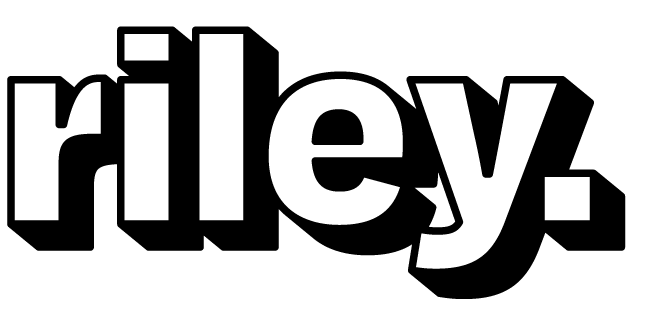Design crimes: the 10 most common design mistakes businesses make.
There are bad business decisions – like hiring your cousin’s friend to do your bookkeeping – and then there are bad design decisions, which have a special place in marketing hell. These are the choices that make customers squint at your logo, wonder if your website was built in 2003, and ultimately decide that they’d rather take their money elsewhere.
Good design is like good manners: when done right, it’s effortless, welcoming, and makes people feel at ease. Bad design, on the other hand, is the digital equivalent of showing up to a job interview in a Hawaiian shirt and Crocs. If you’re wondering whether your business is guilty of design crimes, let’s review the usual suspects.
1. The logo that tries to do too much
Your logo is not a family crest, a mood board, or a novel. If it has more elements than a Transformers movie, it’s time to simplify. The best logos are clean, memorable, and scalable – not an elaborate collage of swirls, clipart, and your pet’s silhouette. If people have to squint to figure out what’s going on, you’ve already lost them.
This applies to charities and ethical businesses as well. A designer knows how to balance emotion and clarity in branding, ensuring your cause is understood at a glance. If your logo has a tree, a heart, a handshake, and a globe all crammed into one, it might be time for a rethink.
2. The font free-for-all
Some businesses believe that using five different fonts on a flyer makes them look “dynamic.” In reality, it makes them look like they designed it using a refrigerator magnet poetry kit. Pick one or two fonts that complement each other, and stick to them. Your audience should not feel like they’ve accidentally stumbled into a ransom note.
3. Colours that burn the retinas
Neon pink text on a bright yellow background? Stop. Stop right now. Colours should be harmonious, not a visual assault. If you wouldn’t wear the colour combination on your body, it probably doesn’t belong in your branding. Stick to cohesive, readable palettes that enhance your message rather than sear it into people’s corneas.
4. The dreaded pixelated images
Nothing screams “unprofessional” like a blurry, pixelated image that looks like it was downloaded from a dial-up internet connection in 1998. High-resolution images are non-negotiable. If your logo or product shots look like they’ve been through a fax machine, it’s time for an upgrade. This is especially true for ethical businesses that rely on storytelling – a freelance graphic designer can ensure your visuals reflect your mission with the clarity it deserves.
5. Ignoring mobile users
Your website might look fantastic on your desktop monitor, but if it turns into a chaotic, unclickable mess on a smartphone, you’ve got a problem. Mobile responsiveness is not optional – it’s survival. If users have to pinch, zoom, and rotate their phones just to find your contact info, they won’t bother.
6. The never-ending wall of text
Nobody wants to read an essay when they land on your website. Text should be concise, skimmable, and well-spaced. If your home page looks like an academic journal, visitors will click away faster than you can say “conversion rate.” A freelance graphic designer can help format your content in a way that keeps readers engaged rather than overwhelmed.
7. Social media graphics that look like a PowerPoint disaster
Your Instagram posts should not look like they were created in Microsoft Word with clipart from 2002. Low-quality, cluttered, or text-heavy social media graphics scream “unprofessional.” Keep it clean, keep it branded, and for the love of good design, don’t stretch your logo until it looks like it’s melting.
8. Overcomplicating the user experience
If your website has more dropdown menus than a spaceship control panel, you’ve gone too far. Customers should be able to find what they need in seconds, not embark on an epic quest through endless subcategories. Simple navigation = happy customers.
9. Stock photos that scream “stock photo”
We’ve all seen them: the overly enthusiastic corporate team high-fiving in a boardroom. The unnaturally attractive call centre representative wearing a headset. These images do more harm than good. If possible, invest in custom photography, or at the very least, choose stock images that look natural and authentic – not something ripped from a generic business brochure.
10. Thinking design is just about “making things pretty”
The most common mistake of all? Believing that design is just an aesthetic choice rather than a strategic tool. Good design builds trust, guides customers, and reinforces your brand’s message. Whether you’re a small business, a charity, or an ethical enterprise, investing in design means investing in how the world perceives you.
Final thoughts: design is not a DIY project
If your business is guilty of any of these offences, don’t panic – just hire a professional designer, apologise for your sins, and let them work their magic. Whether you need a graphic designer to refresh your branding, handle your marketing assets, or communicate your mission, the right expertise will make all the difference. Your customers (and their eyeballs) will thank you.
Thanks for reading! My name is Riley, I’m a freelance graphic designer based in Sydney Australia who specialises in design for charities, not-for-profits and ethical businesses.
Get in touch if you’d like to chat about a project you have in the works.



